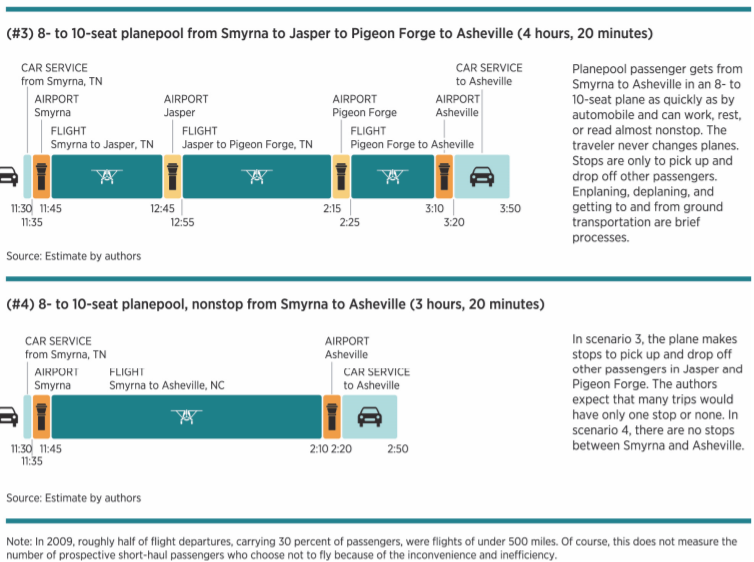- | Regulation Regulation
- | Working Papers Working Papers
- |
Planepooling and Air Taxis for Post-COVID Aviation
For most of its history, commercial aviation has tended toward large airplanes, large airports, and rigidly scheduled flights. But that may be changing in the light of technological innovation and long-term societal changes accelerated by the COVID-19 pandemic. In “Planepooling and Air Taxis for Post-COVID Aviation,” Robert Graboyes and Brent Skorup make the case for “planepooling”—smaller planes, smaller airports, and, for some routes, ad hoc scheduling.
AN IDEA WHOSE TIME HAS COME
The idea of planepooling has been around for a quarter of a century, though in its heyday of discussion (c.1997–2004) it was not a practical option. Since then, new developments in technology (e.g., ridesharing, smartphone apps, more cost-efficient planes) and societal trends (e.g., exodus from large cities, increase in remote work, greater disposable income) have made planepooling more feasible.
AN EVOLVING ENVIRONMENT FOR AVIATION
Social and technological changes are creating an environment in which many flight routes would be better served by planepooling. For example:
- During the pandemic, there has been significant growth in private aviation (e.g., charter jets for business or leisure) as people seek to avoid crowded airports and long connections.
- The private aviation industry is making major investments in the electrification of aircraft, the testing of autonomous (no pilot on board) planes and vertical-takeoff-and-landing (eVTOL) air taxis, and the use of ridesharing software.
- The costs of private aviation will likely fall rapidly as these technologies are adopted, and (COVID-spurred) consumer interest in private regional aviation will likely grow.
HOW PUBLIC POLICY CHANGE CAN HELP
The developments just discussed could make private regional aviation attractive and affordable for business travelers and the middle class. However, convenient, cost-effective planepooling will require both technological advances and changes in public policy. For the latter, regulators should consider the following:
- prioritizing regional aviation at the US Department of Transportation
- liberalizing federal subsidy programs to small airports that might benefit from regional aviation
- the development of a market for regional aviation aerial corridors
KEY TAKEAWAY
As planepooling becomes more feasible, economical, and desirable, we may be moving toward an era in which it becomes an important segment of commercial aviation. This would be a boon to smaller communities and their residents. New technologies, societal changes, and COVID-19 will speed our way toward that new era, but changes to public policy are also necessary.



